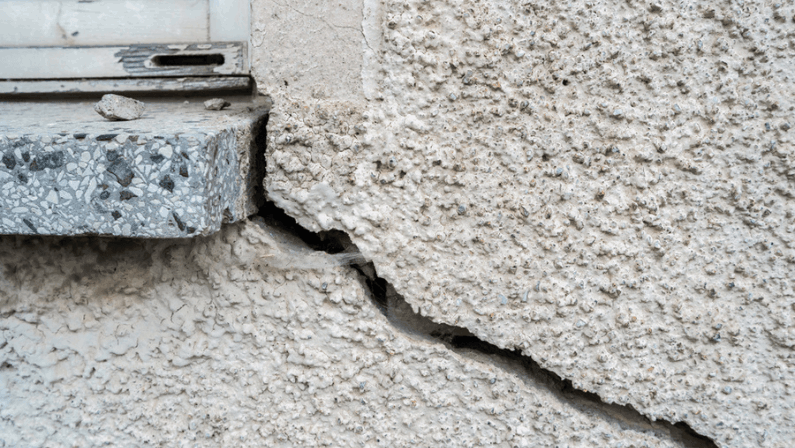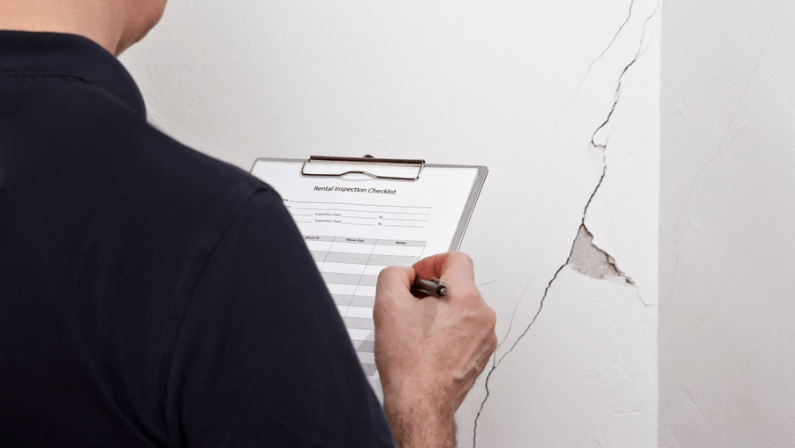Understanding Construction Defects: Types and Causes

Introduction
Construction defects are an unfortunate reality in home building and infrastructure development.
But what exactly is a construction defect? And how can property owners and construction professionals address them?
In this article, we'll go into construction defects, exploring the various types and causes giving you the knowledge you need to make informed decisions.
What is a Construction Defect?

A construction defect is any deficiency in a building or infrastructure's design, materials, or workmanship that negatively impacts its performance, safety, and value.
These defects can arise from multiple sources, including errors in planning, substandard materials, noncompliance with building codes, or improper maintenance. Let's explore some common types of construction defects:
Design Flaws
Design flaws, also known as design defects, occur when a building or structure fails to meet the performance requirements due to errors or omissions in the design process. Examples of design flaws may include inadequate structural support, improper water drainage systems, or insufficient insulation.
Defective Workmanship
Defective workmanship, sometimes referred to as poor workmanship or construction defects, results from poor construction practices, inferior materials, or the use of unqualified labor. Examples of defective workmanship may include improper installation of roofing materials, inadequate plumbing or electrical systems, or the use of low-quality materials that do not meet industry standards.
Lack of Maintenance
Lack of maintenance is a frequent cause of construction defects. Proper upkeep is essential for the longevity and performance of any structure, but especially for buildings made with materials or designs that require regular maintenance.
Examples of construction defects caused by lack of maintenance include water damage from clogged gutters or leaks, crumbling foundations due to lack of drainage systems, or structural damage from untreated termite infestations.
Normal Wear and Tear
Lastly, normal wear and tear can become a construction defect, resulting in excessive damage or premature failure of building materials or components. Building materials have a finite lifespan, but some may wear down more quickly than others due to design issues, environmental factors, or inadequate maintenance. Examples of construction defects resulting from wear and tear may include cracked roofing tiles, warped siding, or damaged window seals.
With all of that, understanding the different types of construction defects, such as design flaws, defective workmanship, lack of maintenance, and normal wear and tear, allows property owners and construction professionals to identify, address, and prevent these issues.
By staying diligent and proactive, we can help minimize the impact of construction defects on our properties and ensure safer, more structurally sound buildings and infrastructures.
Patent vs. Latent Construction Defects

Construction defects are often divided into two primary categories: patent and latent. Understanding the differences between these defects is crucial for construction professionals, as it influences liability, insurance procedures, and mitigation strategies.
Patent Construction Defect
A patent defect is visible upon inspection, often recognizable even without professional guidance.
Common examples of patent defects include visible cracks in the foundation, improper installation of fixtures, and use of substandard materials. Such flaws are typically identified during construction or soon after completion.
Latent Construction Defect
Contrarily, a latent defect is hidden and not immediately noticeable. It may take years for latent defects to manifest.
These could stem from faulty electrical wiring, concealed water leakage, or structural defects caused by improper soil compaction or faulty design. Because they're hidden, these defects can lead to significant damage before discovery.
How to Mitigate a Construction Defect Insurance Claim

Managing the risk of construction defects is crucial to safeguard your business from hefty financial liabilities. Thoughtfully chosen and implemented insurance policies can mitigate a construction defect claim:
General Liability Insurance
General Liability Insurance protects against payouts due to bodily injury or property damage resulting from construction defects. However, it does not cover the costs of repairing or replacing the defective work.
Products-Completed Operations Insurance
Products-Completed Operations Insurance covers the policyholder's liability for injury or property damage caused by a construction defect, even after the project’s completion and handover.
Professional Liability Insurance
Professional Liability Insurance, also known as errors and omissions (E&O) insurance, covers design professionals like architects and engineers from liabilities resulting from design flaws leading to construction defects.
Builder’s Risk Insurance
Builder’s Risk Insurance covers the property during the construction process. It typically includes coverage for damage caused by fire, severe weather, theft, and vandalism but can sometimes extend to cover construction defects.
Who is at Risk for a Construction Defect Claim?
A construction defect claim can impact all parties involved in a construction project. It includes general contractors, subcontractors, architects, engineers, and materials suppliers.
Even property developers and owners can face legal consequences if construction defects emerge. Therefore, understanding construction defects and maintaining adequate insurance coverage is crucial for all stakeholders in the construction industry.
Where Your Construction Company is Located Impacts Insurance for Construction Defects
The location of your construction company significantly influences a key aspect of your business: insurance coverage for construction defects.
Each state has regulations that dictate how to handle construction defect claims, with unique statutes of limitations and statutes of repose. Understanding these distinctions can significantly impact your company's liability and insurance options.
Statute of Limitations
The statute of limitations represents when a claimant can bring a lawsuit for construction defects. It varies depending on state law and the type of claim being made.
Common causes of action within construction defects cases include negligence, breach of contracts, and product liability. Construction companies must understand how the statute of limitations applies in their specific locations to avoid claims that could inevitably harm their business.
Statute of Repose
The statute of repose sets an ultimate deadline for filing a claim, regardless of when the defect was discovered. This statute differs from the statute of limitations in that it begins from the project's completion date, establishing a finite window for pursuing a claim after a construction project is finished.
It is crucial for construction companies to be aware of the applicable statutes of repose in their jurisdictions to protect themselves adequately.
Need Coverage for Construction Defects? Get In Touch With the Team at Hotchkiss Today
For construction companies navigating the complex legal landscape related to construction defects, it's vital to have expert guidance in finding the right insurance coverage to protect your business.
Hotchkiss Insurance, one of the leading insurance agencies with multiple locations in Texas, has the experience and knowledge to design tailored insurance solutions for your construction business.
Hotchkiss Insurance's dedicated team understands how location-specific laws and regulations apply to companies, allowing them to provide the best recommendations that perfectly fit your business needs.
Don't let construction defects create unexpected financial setbacks. Seek experienced guidance from Hotchkiss Insurance – your trusted partner in safeguarding the future of your construction business.
Reach out to the experts at Hotchkiss Insurance and discover the peace of mind that comes from knowing your construction business is equipped with the appropriate insurance coverage, even amidst the constant shifts and variations in state regulations.